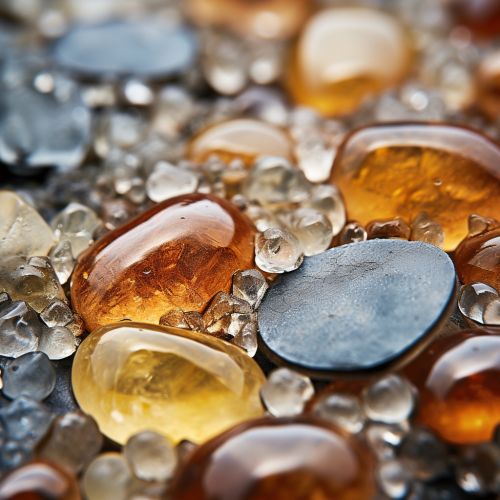Kidney Stones
Introduction
Kidney stones, or renal calculi, are hard deposits made of minerals and salts that form inside your kidneys. They have many causes and can affect any part of your urinary tract — from your kidneys to your bladder. Often, stones form when the urine becomes concentrated, allowing minerals to crystallize and stick together.
Formation
Kidney stones form when there is a decrease in urine volume and/or an excess of stone-forming substances in the urine. The most common type of kidney stone contains calcium in combination with either oxalate or phosphate. These chemicals are part of a person's normal diet and make up important parts of the body, such as bones and muscles.
Types of Kidney Stones
There are four main types of kidney stones:
1. Calcium stones are the most common. They can be made of calcium oxalate (most common), phosphate, or maleate. Eating fewer oxalate-rich foods can reduce your risk of developing this type of stone. High-oxalate foods include potato chips, peanuts, chocolate, beets, and spinach.
2. Uric acid stones form when the urine is too acidic. A diet rich in purines—substances found in animal protein such as meats, fish, and shellfish—may increase uric acid in urine. If uric acid becomes concentrated in the urine, it can settle and form a stone by itself or along with calcium.
3. Struvite stones can happen when you have certain types of urinary tract infections in which bacteria make ammonia that builds up in your urine. Struvite stones are made up of magnesium, ammonium, and phosphate.
4. Cystine stones result from a genetic disorder that causes cystine to leak out of the kidneys and into the urine, forming crystals that tend to accumulate into stones.
Symptoms
Kidney stone symptoms include severe pain, urine that is cloudy or smells bad, and fever and chills if an infection is present. Symptoms of a kidney stone can vary, depending on the size of the stone and where it is located in the urinary tract.
Diagnosis
Diagnosis of kidney stones is best accomplished using an imaging test such as intravenous pyelography (IVP), computed tomography (CT) scan, or ultrasound. The urinary system is then examined for evidence of stones or obstruction.
Treatment
Treatment for kidney stones varies, depending on the type of stone and the cause. Small stones with minimal symptoms can often be managed with pain medications and drinking lots of water to pass the stone. Larger stones may require more extensive treatment such as shock wave lithotripsy, ureteroscopy, or percutaneous nephrolithotomy.
Prevention
Prevention of kidney stones may include a combination of lifestyle changes and medications. A person may be recommended to drink more fluids so as to dilute the substances that lead to stones. Limiting sodium and animal protein (meat, eggs) in the diet may help prevent calcium and uric acid stones. Be sure to eat enough dietary calcium; people with low calcium intake may have higher rates of forming kidney stones.
See Also


